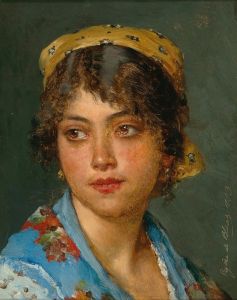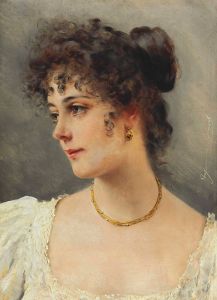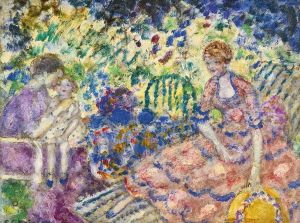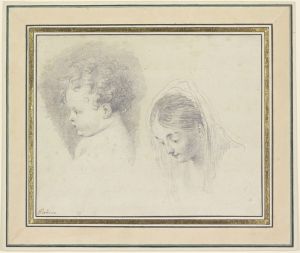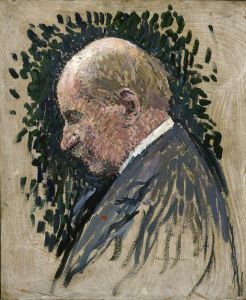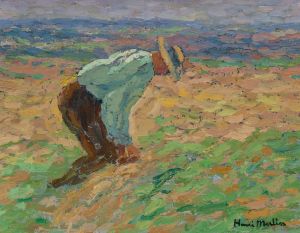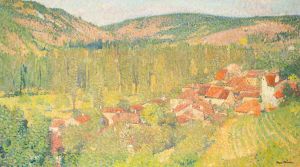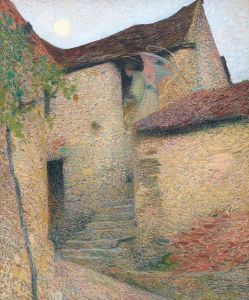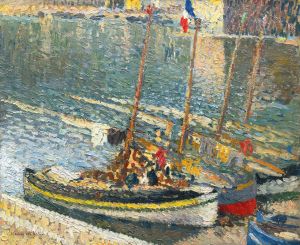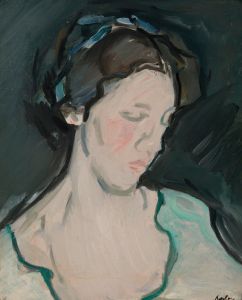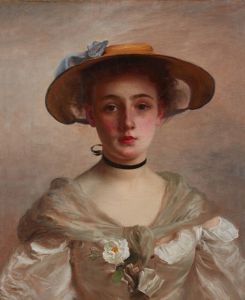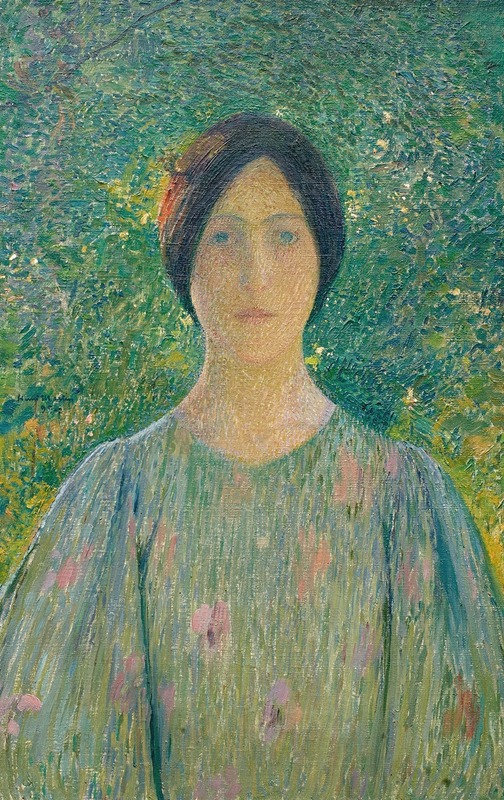
Jeune femme à la robe fleurie
A hand-painted replica of Henri Martin’s masterpiece Jeune femme à la robe fleurie, meticulously crafted by professional artists to capture the true essence of the original. Each piece is created with museum-quality canvas and rare mineral pigments, carefully painted by experienced artists with delicate brushstrokes and rich, layered colors to perfectly recreate the texture of the original artwork. Unlike machine-printed reproductions, this hand-painted version brings the painting to life, infused with the artist’s emotions and skill in every stroke. Whether for personal collection or home decoration, it instantly elevates the artistic atmosphere of any space.
Henri Martin was a prominent French painter associated with the Post-Impressionist movement. He was born on August 5, 1860, in Toulouse, France, and became known for his distinctive style that often blended elements of Impressionism with Symbolism. Martin's work is characterized by its vibrant use of color and light, often depicting serene landscapes and idyllic scenes. One of his notable works is "Jeune femme à la robe fleurie," which translates to "Young Woman in a Flowered Dress."
"Jeune femme à la robe fleurie" is a fine example of Martin's ability to capture the essence of his subjects with a delicate yet expressive touch. The painting features a young woman adorned in a dress with floral patterns, set against a backdrop that highlights Martin's skillful use of color and light. The composition reflects Martin's interest in capturing the beauty of everyday life and the natural world, themes that are prevalent throughout his oeuvre.
Henri Martin's artistic journey began at a young age. He studied at the École des Beaux-Arts in Toulouse before moving to Paris, where he continued his education under the tutelage of renowned artists such as Jean-Paul Laurens. Martin's early work was influenced by the academic style, but he soon gravitated towards the Impressionist movement, drawn by its emphasis on light and color.
Throughout his career, Martin developed a unique style that often incorporated elements of Symbolism, a movement that sought to express ideas and emotions through symbolic imagery. This blend of Impressionism and Symbolism is evident in "Jeune femme à la robe fleurie," where the interplay of light and color creates a dreamlike quality, inviting viewers to contemplate the deeper emotions and narratives behind the scene.
Martin's work gained recognition during his lifetime, and he exhibited regularly at the Salon des Artistes Français. He received numerous accolades, including the prestigious Legion of Honor, and his paintings were acquired by major museums and collectors. Despite his success, Martin remained dedicated to his craft, continually exploring new techniques and themes.
In addition to his portraits and figure studies, Martin is well-known for his landscape paintings, particularly those depicting the French countryside. He spent much of his later life in the village of Labastide-du-Vert in the Lot region, where he found inspiration in the surrounding landscapes. This connection to nature is evident in many of his works, including "Jeune femme à la robe fleurie," where the natural setting plays a crucial role in the composition.
Henri Martin passed away on November 12, 1943, leaving behind a rich legacy of art that continues to be celebrated for its beauty and emotional depth. His works are held in high esteem and can be found in numerous public and private collections worldwide. "Jeune femme à la robe fleurie" remains a testament to Martin's skill as a painter and his ability to capture the essence of his subjects with grace and sensitivity.





